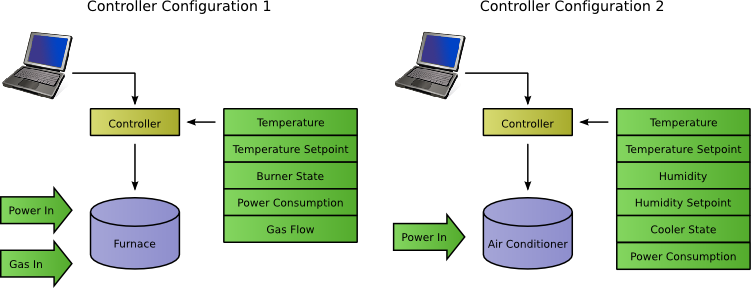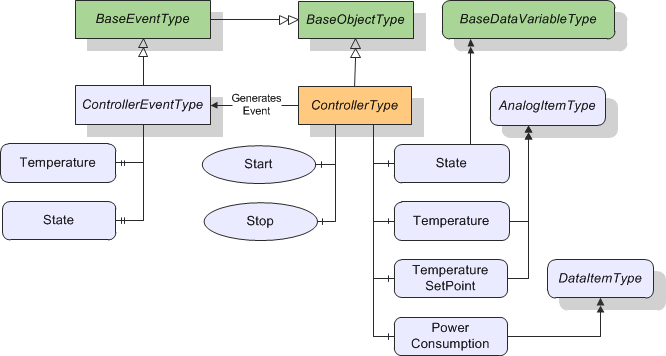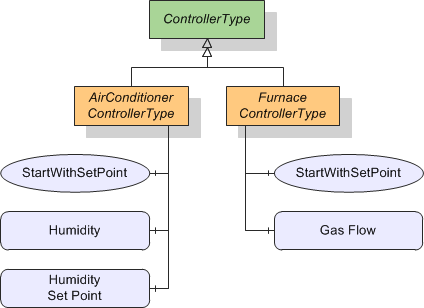 |
.NET Based OPC UA Client/Server SDK
2.6.1.422
|
 |
.NET Based OPC UA Client/Server SDK
2.6.1.422
|
The lesson requires basic knowledge of OPC UA. See OPC UA Fundamentals—especially Address Space Concepts and OPC UA Node Classes—in order to become familiar with OPC UA concepts and terms.
Real world example
The real world example used for this getting started is a temperature controller with two different specialized types, an air conditioner controller and a furnace controller. Figure 2.1 shows the two different control configurations.

Both controllers are providing state, temperature and temperature setpoint variables. Since both controllers share some variables, the object type representation defines a base ControllerType and the two derived object types AirConditionerControllerType and FurnaceControllerType. Figure 2.2 shows the base object type and its variables in the OPC UA notation.

Figure 2.3 shows the two derived object types AirConditionerControllerType and FurnaceControllerType in OPC UA notation.

First step: Using UaModeler for Model Design and Code Generation. If you really don’t want to use UaModeler, see ref L4ServerTutGSLess02b.